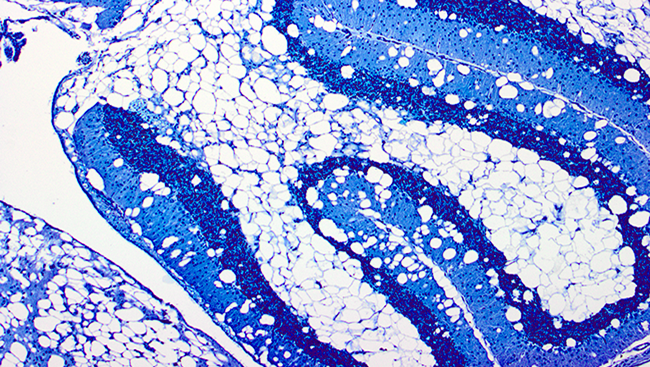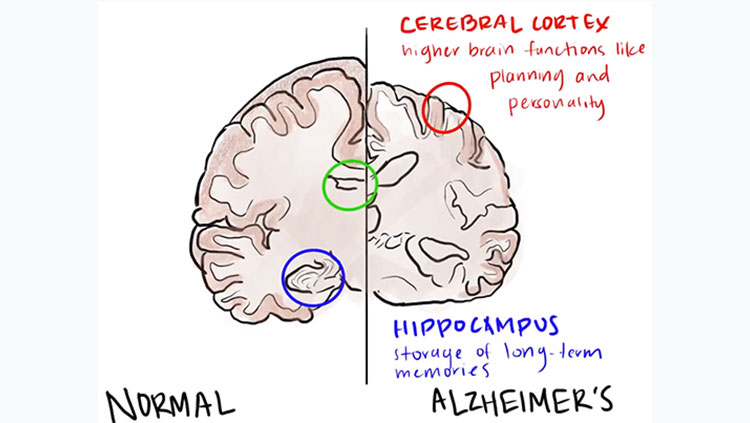Canavan Disease
- Published9 Nov 2015
- Reviewed9 Nov 2015
- Author Michael W. Richardson
- Source BrainFacts/SfN

Canavan disease is a degenerative brain disease that typically appears in infancy. It is caused by a genetic mutation that leads to deterioration of the myelin sheath, the fatty material that wraps around axons to increase the speed of neural signaling. Intellectual disability, poor muscle control, and premature death can result. Scientists are using mice to study how the genetic mutation leads to myelin degeneration. The above image shows an area of the brain called the cerebellum in a mouse model of the disease, with white spots indicating holes in the myelin. There is currently no cure for the disease, but by pinpointing the cause of myelin’s breakdown, researchers hope that therapies may be possible in the future.
CONTENT PROVIDED BY
BrainFacts/SfN


















